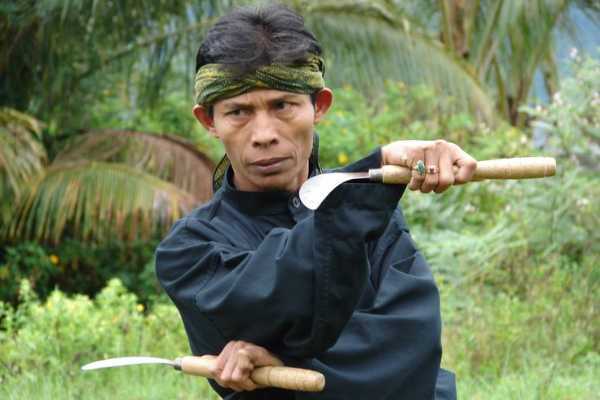If You can learn to be both soft and strong, you become the master of self-awareness and self-control. It is the key to balancing these opposing elements. It is a combination worth mastering.
You may never totally master anything, but that doesn’t mean you can’t get a little closer. It’s about being better today than yesterday. It also means being kind to yourself because perpetual improvement is not a reality. We all have good days and not-so-good days.
Kindness is the first step towards strength with tenderness. Showing kindness to others starts with being kind to ourselves. So, we must add self-care to our routine. It isn’t easy to help others when you are in need. Learn about and practice self-compassion. These tools will give you a foundation.
A Combination Worth Mastering
You may never become the master of a mental or physical discipline, but you can learn to be a master of yourself. It is the small victories that edge us closer to our personal goals. There are levels of mastery.
-
- The Junior Master or Novice
- The Journeyman Master, the steady and competent
- Guru Muda, the experienced teacher and heir apparent
- Guru Tuhan Master near Deity
“The path of mastering something is the combination of not only doing the best you can do at it but also doing it the best it can be done.” — Gary W. Keller
“Perfection is not attainable, but if we chase perfection we can catch excellence.” — Vince Lombardi
Some people are naturally better at being strong, and some are better at being soft—work at being well-rounded. Challenge yourself, but above all, be patient with yourself. You can find a combination with mastering at the opposite ends of a continuum.
“Being both soft and strong is a combination very few have mastered.” — Yasmin Mogahed
Learning the Hard “Soft Skills”
Soft skills are the core learning skills below. These skills affect every aspect of our lives. The “hard skills” are the technical data and knowledge we accumulate and organize with the soft skills. For example, lawyers and doctors use their soft skills to practice the hard skills of their professions. Soft skills are hard to learn because our culture focuses on the data rather than the skills needed to use the data. You can create your own core skills learning program; follow the link and see how. We’ll discuss one important aspect of this training.
- Abstract Thinking
- Adaptability
- Analytical Thinking Abilities
- Attention Control
- Dealing with Ambiguity
- Enhanced Memory
- Goal Setting and Planning
- Inhibition Control
- Self and Social Awareness
- Learning Skills
Learn to Be both Soft and Strong
Mastering the “hard, soft skills” is about returning to the basic learning skills. As children, there were three major skills we needed to learn in order to be a part of society and to succeed. We needed to learn how to share, play with others, and control our emotions. You can spot the adults who failed to learn these lessons. These are the people who are selfish and greedy.
If you do not learn these basic social skills, it impacts your ability to function in the world. You can, however, correct any of these deficiencies if you apply yourself.
Learning Patience
If you are to become a master of any skill, you need patience. Our modern world is focused on immediate gratification. The patience of someone waiting for a webpage to load is measured in milliseconds. You’ll need to remember the day when a dial-up modem took several minutes. We were happy if it worked at all. We invented many new cuss word combinations during those good old days. But that’s the kind of patience you need today when dealing with navigating automated phone systems.
Patience requires one to learn to be both soft and strong. We must be strong-willed to remain focused yet not allow emotions like frustration to interfere.
“A man who is a master of patience is master of everything else.” – George Savile
It takes courage to take the path of gentleness, and this is the Eastern quality of Yin. The journey requires us to resist negative emotions like anger or self-pity. To do this, you’ll need to engage the power of your Will. You’ll also need to assess your spiritual path and make the necessary changes honestly.
Most of all, you’ll need patience. So, learn to cultivate the ability to tolerate the tests and trials to make progress. Here are some ways to cultivate this commodity.
Learn to be present, so you’ll spot the emotions sooner when you become frustrated and angry. When you acknowledge your feelings, you have the power to change them. The first thing most people notice is that it feels terrible. So why do we stay frustrated for so long? Because we don’t realize we have the power to stop it.
We recommend a simple emotional check-in process to help you regain emotional equilibrium. Focusing on breathing and a comfortable posture takes the force away from frustration. Here’s a short version with an acronym to help you remember, STOP.
S— Stop and remember you have the power to control things.
T— Take a deep breath and focus on sitting straight but comfortably.
O— Observe how your frustration and anger make you feel.
P— P is for practice placing your awareness on breathing and body awareness. When your mind tries to bring up the source of the frustration, bring your mind back to the practice.
Spiritual Applications of Strength and Softness
You must learn to be both soft and strong when you are dealing with inner work. For instance, you must learn to be gentle when examining your faults. Then, we need to be strong enough to push through the negative inertia that keeps us from making the changes we want. It takes strength and vulnerability to examine our beliefs and face our fears.
Many top athletes talk about ” moving effortlessly” when they find the grove. They describe it as an inner silence or stillness. So, alternating movement and stillness is a combination worth mastering.
Our inner critic can overpower our thinking processes. When we use self-love and self-forgiveness, the inner critical voice is silent. So, we find acceptance not by strength but through gentleness. Instead of condemnation and judgment, we “feel” the peace of forgiveness. In return, this strengthens us. We chose the path of gentleness, and this makes us strong.
Several things seem opposite but are complementary elements on the same continuum. For instance, martial arts and silent meditation seem like opposites, but they are the same path elements.
The body benefits from movement, and the mind benefits from stillness. — Sakyong Mipham
Yin and Yang in Martial Arts: a Combination Worth Mastering
In the arena of internal martial arts, this is the essence of the practice. Becoming both soft and strong relates to the physical and mental aspects of the art. These are the “hard, soft skills” of self-control. You seem to be weak because you become like water. You do not oppose the force of your opponent directly. Instead, you redirect their energy for your benefit. You learn to do this by controlling your nervous system.
The Sympathetic Nervous (SN) system takes charge when something threatens our physical safety. It’s the default setting of the nervous system. After all, the sympathetic system activates the “fight, flight, or freeze” response of our primitive monkey brain; this increases adrenalin and several other powerful enzymes.
SN helps us react quickly and have less response to pain, but it also creates a problem. These chemicals are damaging to the higher thinking centers. So, the brain shuts off blood flow to these brain centers. So, we are fast but only at a primitive level of intelligence. Sometimes, I think many people get stuck here, but that’s a different topic.
The fight and flight response helps us move faster, but without the guidance of the higher thinking centers needed to process information in a rapidly changing situation like combat.
“Everybody has a plan until they get punched in the mouth. Then, like a rat, they stop in fear and freeze.” — Mike Tyson
It is why martial artists train to engage the parasympathetic nervous system. They learn to override the automatic engagement of the sympathetic nervous system. It is definitely a combination worth mastering. On the surface, this seems counterintuitive. However, we want to engage the parasympathetic nervous system to use the higher thinking capability. The ability to reason and act correctly is what you need in this life-threatening situation.
Now, they can make split-second decisions that were impossible with SN in control. Being soft and pliable makes it possible to overcome the stronger opponent.
So, with the proper training, you can be fluid. It hides your skills and inner strength. You appear as an easy opponent. By the time the opponent realizes the mistake, it is too late. They are the victim of their faulty assessment of your actual ability. With the Parasympathetic in charge, you can move the right way at the right time.
When we learn to be both soft and strong, we can control our emotions. This skill allows us to access the higher-thinking center of the mind while dealing with conflict.
“Water is fluid, soft, and yielding. But water will wear away rock, which is rigid and cannot yield. As a rule, whatever is fluid, soft, and yielding will overcome whatever is rigid and hard. This is another paradox: what is soft is strong.” ― Lao Tzu
Gentle and Balanced Beats Brute Force
The gentle approach cultivates trust and thus is a strength. When you cultivate gentleness, you are also promoting kindness. If you do this, it will become a part of your character. It doesn’t mean you’ll always have a sunny disposition, but it will make you more approachable. Enhancing “hard, soft skills” cultivates empathy and compassion.
The brutal approach is stereotypical Drill Sargent or Pro-Football coach. The need for immediate performance is short-lived. The coaches with the most winning careers are those perceived as inspirational, like Tom Landry and Vince Lombardy.
The idea behind gentle learning is to build trusting relationships. People learn more quickly when they feel it is safe to make mistakes rather than to be punished.
Being approachable is one of the cornerstones of being a leader in management. But cultivating a soft heart means caring for people and not just focusing on what they can produce. People notice the difference between genuine people and those who are not.
Alternating Silence or Softness with Action and Strength
Almost every form of seated meditation has a reciprocal moving aspect. Many ancient practices contain both silence and movement. The Shamanic Journey and many of the healing arts are examples. Select two complementary spiritual tools. Make them a combination worth mastering. Here are some examples:
Conclusions on Being Both Soft and Strong
It is all about practice and patience, a combination worth mastering. Pick something you want to be more balanced, and chances are it will require mastering.


